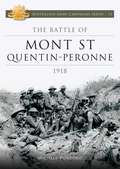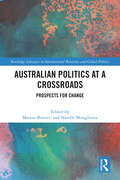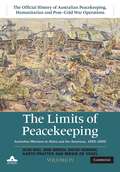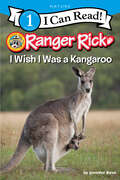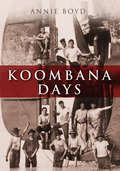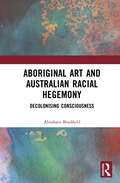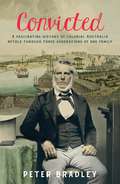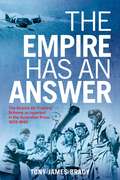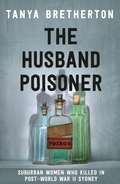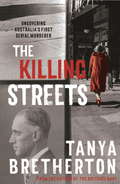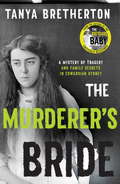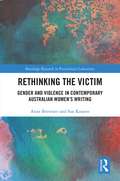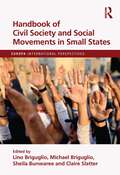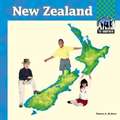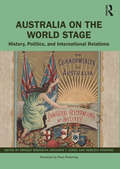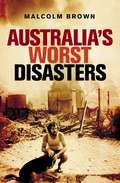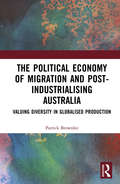- Table View
- List View
The Battle of Mont St Quentin Peronne 1918: The Battle of Mont St Quentin-Peronne 1918 (Australian Army Campaigns #11)
by Michele BomfordThe Battle of Mont St Quentin-Peronne 1918 explores the relationship between myth and history and the significance of the Anzac legend. It analyses the forces that drove the diggers forward even when they had reached the limits of their endurance. The Battle of Mont St Quentin-Peronne represents the Australian Corps at its very best, its diggers fighting for peace and satisfied that, `whatever might lie ahead, at least everything was right behind them'.
The Voice of the Spirits: A Commandant Michel de Palma Investigation
by Xavier-Marie BonnotCommandant Michel de Palma follows an anonymous tip-off to a gated mansion by the coast and finds a body whose face is obscured by a fearsome tribal mask. Beneath it is a mysterious wound that could not have been caused by a bullet. Surrounded by scores of masks and painted skulls, de Palma hears the haunting strains of a primal flute from the floors above. With few leads to go on, de Palma delves into an account of the murdered doctor's voyage to Papua New Guinea seventy years earlier. But when his chief suspect is found dead, killed by the same method as Delorme, he begins to wonder whether the bodies on his hands are not the victims of spirits intent on revenge.
The Voice of the Spirits: A Commandant Michel de Palma Investigation
by Xavier-Marie BonnotCommandant Michel de Palma follows an anonymous tip-off to a gated mansion by the coast and finds a body whose face is obscured by a fearsome tribal mask. Beneath it is a mysterious wound that could not have been caused by a bullet. Surrounded by scores of masks and painted skulls, de Palma hears the haunting strains of a primal flute from the floors above. With few leads to go on, de Palma delves into an account of the murdered doctor's voyage to Papua New Guinea seventy years earlier. But when his chief suspect is found dead, killed by the same method as Delorme, he begins to wonder whether the bodies on his hands are not the victims of spirits intent on revenge.
Australian Politics at a Crossroads: Prospects for Change (ISSN)
by Matteo Bonotti Narelle MiragliottaAs the 21st century proceeds apace, Australia faces new and old challenges, both domestically and internationally. These include managing complex governance issues, preventing democratic fracture, balancing an ever- shifting geopolitical strategic order, addressing the recognition and identity demands of marginalised groups, and responding to crises and urgent policy challenges, such as climate change.Bonotti, Miragliotta, and the other contributors to this volume analyse and evaluate the challenges which confront Australia by locating them in their national and comparative context. The various contributions reveal that while these challenges are neither novel nor unique to Australia, the way in which they manifest and Australia’s responses to them are shaped by the country’s distinctive history, culture, geography, location, and size.The chapters offer a cutting- edge analysis of these pressing challenges faced by Australia and offer reflections on how to address them. The book is a valuable resource for scholars and students of Australian politics, and of comparative politics in a global perspective.
The Limits of Peacekeeping: Australian Missions in Africa and the Americas, 1992–2005
by Jean Bou Bob Breen David Horner Garth Pratten Miesje De VogelThe Limits of Peacekeeping highlights the Australian government's peacekeeping efforts in Africa and the Americas from 1992 to 2005. Changing world power structures and increased international cooperation saw a boom in Australia's peacekeeping operations between 1991 and 1995. The initial optimism of this period proved to be misplaced, as the limits of the United Nations and the international community to resolve deep-seated problems became clear. There were also limits on how many missions a middle-sized country like Australia could support. Restricted by the size of the armed forces and financial and geographic constraints, peacekeeping was always a secondary task to ensuring the defence of Australia. Faith in the effectiveness of peacekeeping reduced significantly, and the election of the Howard Coalition Government in 1996 confined peacekeeping missions to the near region from 1996–2001. This volume is an authoritative and compelling history of Australia's changing attitudes towards peacekeeping.
Ranger Rick: I Wish I Was a Kangaroo (I Can Read Level 1)
by Jennifer BovéExplore the lives of kangaroos with Ranger Rick in this Level One I Can Read with vivid color photos!What if you wished you were a kangaroo and then you became one? Could you eat like a kangaroo? Move like a kangaroo? Live in a kangaroo family? And would you want to? Find out!This Level One I Can Read answers questions for beginning readers about kangaroos. This format engages young readers by comparing and contrasting the life of the kangaroo to the life of the reader. In call-outs, Ranger Rick asks the reader things like: Can you hop like a kangaroo?Did you know that some kangaroos are great swimmers? Did you know that kangaroos are really fast and can hop up to 40 miles per hour? From Tree Kangaroos to the Rock Wallaby to the more familiar Red Kangaroos, young Ranger Rick explorers will love this Level One I Can Read that helps beginning readers dig a little deeper into the amazing lives of kangaroos.Ranger Rick: I Wish I Was a Kangaroo is complete with fascinating facts, vivid photographs, a Wild Words glossary, and a hands-on activity where you find out how far you can jump—just like a kangaroo!This Level 1 I Can Read story is perfect for children ages 5 to 7 who are ready to read independently. Whether shared at home or in a classroom, the short sentences, familiar words, and simple concepts of Level One books support success for children eager to start reading on their own.
Koombana Days
by Annie BoydThe elegant, ultra-modern SS Koombana arrived in Western Australia in March 1909; after only three years of service in the North West of Australia, the ship and her entire complement disappeared in a late-summer cyclone off the Pilbara coast in 1912. All 156 lives were lost but the wreck was never found. This thoroughly researched and compelling book comes closer than ever before to solving the mystery of Australia’s most significant maritime disaster. Author Annie Boyd spent months camping along the coast, diving and investigating wrecks, researching the Koombana, and meeting with descendants of those lost in the tragedy. This insightful account is the culmination of her work, which includes a 20,000 page online resource with background material and primary sources.
Aboriginal Art and Australian Racial Hegemony: Decolonising Consciousness
by Abraham BradfieldThis book explores the complexities of Indigenous and non-Indigenous relations in contemporary Australia. It unpacks the continuation of a pervasive colonial consciousness within settler-colonial settings, but also provokes readers to confront their own habits of thought and action. Through presenting a reflexive narrative that draws on the author’s encounters with Indigenous artists and their artwork, knowledge, stories, and lived experiences, this provocative and insightful work encourages readers to consider what decolonising means to them. It presents a compelling and relevant argument that calls for a reorientation of dominant discourses fixed within Eurocentric frameworks, whilst also addressing the deep complexities and challenges of living within intercultural settler-colonial settings where different views and perspectives clash and complement one another.
Convicted
by Peter BradleyA unique history of Australia retold through the extraordinary lives of Peter Bradley&’s three ancestors: a father, son and grandson. James Bradley was a First Fleet convict found guilty of stealing a white linen handkerchief worth two shillings, and sentenced to seven years transportation to Australia. Joseph Bradley worked his life in the most dangerous occupation of the time – whaling – and despite his parents being uneducated and illiterate went on to write a journal about his experiences, rich in history and insight. Roland Bradley was a man of unionism and politics, and like his father and grandfather took up the fight against the rich and powerful through his involvement with the early Maritime union. In 1894, he wrote an account of surviving the shipwreck of the SS Kanahooka, which forced its inhabitants to wander the wilderness of North Queensland for 18 days. Following the early struggles of a fledgling colony to nationhood, Convicted is an engrossing and highly imaginative retelling of the story of one family, entwined with the history of this country from the landing of the First Fleet in 1788.
To Salamaua
by Phillip BradleyFollowing on from his acclaimed book, The Battle for Wau, Phillip Bradley turns his attention to the Salamaua campaign - the first of the New Guinea offensives by the Australian Army in the Second World War. Opening with the pivotal air-sea battle of the Bismarck Sea, this important title recounts the fierce land campaign that was fought for the ridges that guarded the Japanese base at Salamaua. From Mount Tambu to Old Vickers and across the Francisco River, the Australians and their American allies fought a desperate struggle to keep the Imperial Japanese Army diverted from the strategic prize of Lae. To Salamaua covers the entire campaign in one volume for the first time. From the strategic background of the campaign and the heated conflicts, to the mud and blood of the front lines, this is the extraordinary story.
The Empire Has An Answer: The Empire Air Training Scheme as Reported in the Australian Press 1939-1945
by Tony James Brady&If we do not win the battle of training, we shall win no other battle in the air.’ In 1943 the Royal Air Force recognised that training a vast amount of aircrew for a high attrition war was essential to an Allied victory, and that the key to winning the ‘battle of training’ was the Empire Air Training Scheme (EATS). 37,576 Australian aircrew graduated from the EATS. Over 300 were killed whilst training for war and 9874 aircrew were killed or listed as missing while on active duty. Those who fought under this scheme during World War II amounted to just 6.7 per cent of Australian service personnel serving overseas yet the aircrew losses amounted to almost 25 per cent of all the Australian fatalities during the war. This made serving in EATS among the most hazardous duties of the war. The Empire has an Answer was researched using more than 35 000 articles, from 150 metropolitan, regional, and district newspapers, and what materialised was a story of one of, if not, the greatest training programs the world has seen. Follow the journey from the conception and implementation of the scheme, through recruitment and basic training, flight training, and then into combat. The individual accounts woven into the narrative provide a first-hand experience of the triumphs and trials of typical airmen and airwomen who performed extraordinary feats in a time of great need. The significant achievements and success of the Empire Air Training Scheme has for the most part been overlooked in our history, until now.
Labor'S Conflict
by Tom Bramble Rick KuhnOnce widely regarded as the workers greatest hope for a better world, the ALP today would rather project itself as a responsible manager of Australian capitalism. Labor's Conflict provides an insightful account of the transformations in the Party's policies, performance and structures since its formation. Seasoned political analysts, Tom Bramble and Rick Kuhn offer an incisive appraisal of the Party's successes and failures, betrayals and electoral triumphs in terms of its competing ties with bosses and workers. The early chapters outline diverse approaches to understanding the nature of the Party and then assess the ALP's evolution in response to major social upheavals and events, from the strikes of the 1890s, through two World Wars, the Great Depression, and the post-war boom. The records of the Whitlam, Hawke, Keating, Rudd and Gillard governments are then dissected in detail. The compelling conclusion offers alternatives to the Australian Labor Party, for those interested in progressive change.
First and Foremost: A Concise Illustrated History of 1st Battalion, the Royal Australian Regiment, 1945 - 2018
by Bob BreenThis history has been published to mark 70 years of service as well as the 50th Anniversary of the battle of Coral/Balmoral in Vietnam in 1968, the 25th Anniversary of service in Somalia in 1993 and the 10th anniversary of service in Afghanistan in 2008/09. It covers only the ‘wave tops’ of 70 years of history and mentions only a few individuals, mostly commanding officers or contingent commanders who had ultimate responsibility for operational success or failure; thus, deserving their prominence. Photographs and tables do their best to enhance the narrative in the expectation of, ‘A picture is worth a 1000 words’. By measures of its operational record, The 1st Battalion, The Royal Australian Regiment is one of the first and foremost battalions of the Royal Australian Regiment.
The Husband Poisoner: Suburban women who killed in post-World War II Sydney
by Tanya BrethertonShocking real-life stories of murderous women who used rat poison to rid themselves of husbands and other inconvenient family members. For readers of compelling history and true crime, from critically acclaimed, award-winning author Tanya Bretherton.After World War II, Sydney experienced a crime wave that was chillingly calculated. Discontent mixed with despair, greed with callous disregard. Women who had lost their wartime freedoms headed back into the kitchen with sinister intent and the household poison thallium, normally used to kill rats, was repurposed to kill husbands and other inconvenient family members. Yvonne Fletcher disposed of two husbands. Caroline Grills cheerfully poisoned her stepmother, a family friend, her brother and his wife. Unlike arsenic or cyanide, thallium is colourless, odourless and tasteless; victims were misdiagnosed as insane malingerers or ill due to other reasons. And once one death was attributed to natural causes, it was all too easy for an aggrieved woman to kill again.This is the story of a series of murders that struck at the very heart of domestic life. It's the tale of women who looked for deadly solutions to what they saw as impossible situations. The Husband Poisoner documents the reasons behind the choices these women made - and their terrible outcomes.
The Killing Streets: Uncovering Australia's first serial murderer
by Tanya Bretherton**WINNER OF THE 2020 DANGER PRIZE**From the acclaimed author of THE SUITCASE BABY and THE SUICIDE BRIDE, the fascinating story of a series of horrific murders that began in 1930s Sydney - and a killer who remained at large for over two decades.In December 1932, as the Depression tightened its grip, the body of a woman was found in Queens Park, Sydney. It was a popular park. There were houses in plain view. Yet this woman had been violently murdered without anyone noticing. Other equally brutal and shocking murders of women in public places were to follow. Australia's first serial killer was at large.Police failed to notice the similarities between the victims until the death of one young woman - an aspiring Olympic swimmer - made the whole city take notice. On scant evidence, the unassuming Eric Craig was arrested. But the killings didn't stop... A compelling story of a city crippled by fear and what happens when victims are blamed and suspects are presumed guilty, The Killing Streetsinvestigates how a murderer could remain free to kill again.**Includes a BONUS extract from Tanya Bretherton's compelling new book THE HUSBAND POISONER**
The Murderer's Bride: A mystery of tragedy and family secrets in Edwardian Sydney
by Tanya BrethertonThe charlatan Alicks Sly murdered his wife, Ellie, and killed himself with a cut-throat razor in a house in Sydney's Newtown in early 1904, leaving their children to a wretched fate. He wasn't the only man to murder his wife - or try - that year. Life in the big city could be harsh and brutal, and so could marriage. Sociologist Tanya Bretherton traces the brutal story of Ellie, one of several murderer's brides in turn-of-the-century Sydney; of her husband, Alicks, and his family; and their three orphaned sons, adrift in the world.From the author of the acclaimed THE SUITCASE BABY - shortlisted for the 2018 Ned Kelly Award, Danger Prize and Waverley Library 'Nib' Award - comes another riveting true-crime case from Australia's dark past. THE MURDERER'S BRIDE is a masterful exploration of criminality, insanity, violence and bloody family ties in bleak, post-Victorian Sydney.**Includes an extract from THE SUITCASE BABY and an extract from Tanya Bretherton's latest fascinating true-crime story, THE KILLING STREETS**
Rethinking the Victim: Gender and Violence in Contemporary Australian Women's Writing (Routledge Research in Postcolonial Literatures)
by Anne Brewster Sue KossewThis book is the first to examine gender and violence in Australian literature. It argues that literary texts by Australian women writers offer unique ways of understanding the social problem of gendered violence, bringing this often private and suppressed issue into the public sphere. It draws on the international field of violence studies to investigate how Australian women writers challenge the victim paradigm and figure women’s agencies. In doing so, it provides a theoretical context for the increasing number of contemporary literary works by Australian women writers that directly address gendered violence, an issue that has taken on urgent social and political currency. By analysing Australian women’s literary representations of gendered violence, this book rethinks victimhood and agency, particularly from a feminist perspective. One of its major innovations is that it examines mainstream Australian women’s writing alongside that of Indigenous and minoritised women. In doing so it provides insights into the interconnectedness of Australia’s diverse settler, Indigenous and diasporic histories in chapters that examine intimate partner violence, violence against Indigenous women and girls, family violence and violence against children, and the war and political violence.
Handbook of Civil Society and Social Movements in Small States (Europa International Perspectives)
by Lino Briguglio Claire Slatter Michael Briguglio Sheila BunwareeThis volume is unique because of its focus on small states. There are many studies on civil society and social movements, but none that specifically deal with this category of countries. As is well known, small states have particular characteristics, including a limited ability to reap the benefits of economies of scale, a high degree of exposure to forces outside their control, and the proximity of politicians to the voters, often leading to clientelistic relationships and patronage networks. The small island developing states have the additional problem of high environmental vulnerability, with some also dealing with disproportionate ecological footprints. These factors have a bearing on the organization and performance of civil society organizations and social movements, as explained in several chapters of this book. The volume is organized in three parts, dealing with aspects of civil society and social moments in small states in the political, social and environmental spheres, respectively. Various definitions of civil society are proposed in the chapters, but most authors associate the term with organized groups, operating in the interest of citizens, independently of government and commercial business, including various forms of non-governmental organizations (NGOs). Civil society also encompasses social movements, which are considered to be loosely organized collective campaigns in pursuit of social goals. These two terms are sometimes used interchangeably; however, some authors argue that social movements tend to engage in ‘contentious politics’ including protests, while NGOs engage through more organized and institutional routes.
New Zealand
by Tamara L. BrittonAn introduction to the history, geography, plants and animals, government, people, and culture of New Zealand. For children.
Australia on the World Stage: History, Politics, and International Relations
by Bridget Brooklyn Benjamin T. Jones Rebecca StratingAustralia on the World Stage: History, Politics, and International Relations offers a fresh examination of Australia’s past and present. From the complex interactions of First Nations to modern international relations with significant partners and allies, it examines the forces that have influenced the place now called Australia both historically and today. It is a unique history told in two parts. The first half of the book examines the way Australia acted on the world stage both before and after British colonisation. It outlines the evolution of Australia’s relationship with the United Kingdom, first as colonies, then a dominion, and finally as an independent nation. It finishes with a First Nations perspective on foreign relations. The second half of the book provides a wide-ranging history of Australia’s dealings with major powers, the United States and China, as well as its relationships with New Zealand, Aotearoa, the Pacific Islands, Indonesia, Japan, Antarctica, and the United Nations. Written by leading and emerging researchers in their fields, this book encourages the reader to consider Australia’s performance on the world stage over the longue durée, well before the word ‘Australia’ was ever dreamt up. This interdisciplinary work challenges lazy stereotypes that see Australia's international history as fixed and uncontested. In revisiting Australia’s foreign relations, this work also asks the reader to consider its future directions.
Australia's Worst Disasters
by Malcolm BrownGraphic accounts of Australia?s worst disasters ? historical as well as events of recent years.From the Ash Wednesday bushfires of 1983 to the implosion of the Royal Canberra Hospital in 1997, and from the shocking Granville railway crash in 1977 to the Sea King helicopter crash of 2005, Australia's history has been punctuated by incidents of disaster and tragedy that have shocked us all. Sometimes warning signs were not read (or were ignored); sometimes human error was to blame. These graphic and compelling accounts by veteran Sydney Morning Herald journalist Malcolm Brown and other award-winning journalists tell us far more than simply what happened - they provide unique insights into the impact of these events on the lives of innocent people. And, interspersed with stories of death and destruction, are heart-warming accounts of courage, grace and just plain good luck.
A History of Canberra
by Nicholas BrownDesigned as an 'ideal city' and emblem of the nation, Canberra has long been a source of ambivalence for many Australians. In this charming and concise book, Nicholas Brown challenges these ideas and looks beyond the clichés to illuminate the unique, layered and often colourful history of Australia's capital. Brown covers Canberra's selection as the site of the national capital, the turbulent path of Walter Burley Griffin's plan for the city, and the many phases of its construction. He surveys citizens' diverse experiences of the city, the impact of the Second World War on Canberra's growth, and explores the city's political history with insight and wit. A History of Canberra is informed by the interplay of three themes central to Canberra's identity: government, community and environment. Canberra's distinctive social and cultural history as a centre for the public service and national institutions is vividly rendered.
The Political Economy of Migration and Post-industrialising Australia: Valuing Diversity in Globalised Production
by Patrick BrownleeDuring the 1980s and 1990s, Australia’s migration intake turned rapidly towards recruiting business professionals, managers and entrepreneurs to support the country’s entry into an economic system marked by global value chains. This book analyses the policy idea termed Productive Diversity, introduced by the Australian government as a way of conceptualising the belief that migrants would bring business acumen and a global outlook to help Australia compete as a trading nation. The book examines this germinal period of Australia’s economic reorientation through a close inspection of policy documents, parliamentary hearings, economic and migration statistics, and interviews with the architects of the policy. It provides a comprehensive account of how the policy framework emerged, how it was implemented, and studies the rationale in recruiting self-starters and managers to connect with global trade flows. This work will be of interest to students and researchers of migration studies, especially Australian migration, diversity policies, sociology, multiculturalism, economics, development studies, and Asia-Pacific studies. The methods and data will also be of value to political economists and policy makers.

